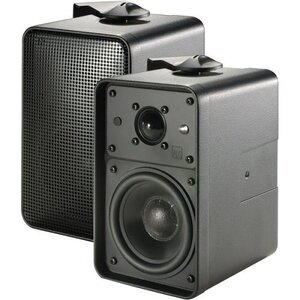OpenWrt 6.6 vs. 5.15 Kernel: Which Brings the Real Advantage?
Why Even Bother Comparing openwrt6.6 vs 5.15内核优点 Kernels?
If you’re diving into OpenWrt, you’re probably serious about customizing and maximizing your network’s performance. But which kernel version, 6.6 or 5.15, actually gives you an edge?
At first glance, they might look similar, but under the hood, each kernel comes with its own set of perks and quirks. I’m here to break down the differences between openwrt6.6 vs 5.15内核优点 so you can make a clear choice.
What’s Changed from openwrt6.6 vs 5.15内核优点?
Switching from openwrt6.6 vs 5.15内核优点 isn’t just about grabbing the latest release. There are practical reasons people want to know about the jump.
Let’s start with the big upgrades:
Security Patches & Updates
With each new kernel release, security takes a front seat. openwrt6.6 vs 5.15内核优点 includes updated patches, sealing vulnerabilities that surfaced in 5.15. If your router handles sensitive data, this alone could be a reason to consider 6.6.
- 6.6 Includes: Up-to-date firewall patches, increased protections against DDoS attacks, and other security refinements.
- 5.15 Lacks: Certain newer security protocols that came with 6.6, leaving it a bit more vulnerable.

Performance Boosts in Networking
openwrt6.6 vs 5.15内核优点 brings a sharper focus on network efficiency.
- Packet Handling: Improvements in packet management mean less congestion and better handling of multiple devices at once.
- Latency Reduction: 6.6 reduces latency, which is huge if you’re streaming or gaming and want minimal lag.
Think of it this way: with openwrt6.6 vs 5.15内核优点, your network could feel like a well-oiled machine, while 5.15 might still handle the job, just with a few extra bumps along the way.
Compatibility and Hardware Support
If your setup involves older hardware, compatibility is key.
- OpenWrt 5.15 is built to run on a broader range of legacy devices. If you’re working with older routers, 5.15 could be your go-to without requiring hardware upgrades.
- OpenWrt 6.6, on the other hand, tends to favor newer hardware, utilizing recent chipsets more efficiently.
To put it plainly, if your router is on the older side, sticking with openwrt6.6 vs 5.15内核优点 might keep things running smoothly without extra hassles.
User Experience Improvements: What’s New in openwrt6.6 vs 5.15内核优点?
If you value a slick and user-friendly experience, openwrt6.6 vs 5.15内核优点 has a few tricks up its sleeve.
Improved Interface Responsiveness
- OpenWrt 6.6 introduces a more responsive UI. No one likes waiting for screens to load, and 6.6 seems to speed things up here, making for a smoother interface.
- 5.15 still does the job but may lag slightly behind, especially if you’re customizing settings frequently.
Better Customization Options
OpenWrt 6.6 also offers some enhanced customization features that tech enthusiasts will appreciate.
- Firmware Add-ons: Easier installation and customization of firmware add-ons, making your router setup more adaptable to your needs.
In short, if you’re into tweaking your settings regularly, 6.6 will make the whole process feel more streamlined.

Memory and Storage Efficiency
Both 5.15 and 6.6 bring different strengths to the table when it comes to memory and storage usage.
OpenWrt 6.6
- Better Memory Management: openwrt6.6 vs 5.15内核优点 optimizes memory use, allowing for smoother multitasking on higher-end routers. If you’re running multiple processes, this is a big advantage.
- Enhanced Storage Efficiency: OpenWrt 6.6 brings enhanced storage optimization, freeing up space for logs, add-ons, and other extras without slowing things down.
OpenWrt 5.15
- Lower Memory Requirements: 5.15 has lower baseline memory requirements, making it ideal for less powerful routers. With 5.15, your older router can still handle multiple devices without getting bogged down.
If you’re working with a higher-end device, openwrt6.6 vs 5.15内核优点 will likely make the most of its capabilities, while 5.15 remains a solid pick for resource-constrained hardware.
FAQs: Quick Answers for Common Questions
Is OpenWrt 6.6 more secure than openwrt6.6 vs 5.15内核优点?
Yes, OpenWrt 6.6 includes updated security patches and protocols not found in 5.15, making it the more secure choice.
Does OpenWrt 6.6 support older routers?
Generally, OpenWrt 6.6 is better suited for newer hardware, while openwrt6.6 vs 5.15内核优点 is a safer bet for older routers.
Which kernel is faster, openwrt6.6 vs 5.15内核优点?
OpenWrt 6.6 tends to offer better performance, especially in network handling and UI responsiveness. However, the exact difference depends on your router’s hardware capabilities.
Will upgrading to openwrt6.6 vs 5.15内核优点?
Potentially, yes. openwrt6.6 vs 5.15内核优点 has better packet handling and network efficiency, which can help improve Wi-Fi speed, especially under high traffic.
Is it worth upgrading from openwrt6.6 vs 5.15内核优点 if I’m not a tech expert?
If security and performance are priorities for you, then yes. openwrt6.6 vs 5.15内核优点 is more streamlined, which can make the upgrade worthwhile.
The Final Take on openwrt6.6 vs 5.15内核优点
To wrap it up, openwrt6.6 vs 5.15内核优点 brings the advantage with better security, enhanced performance, and newer customization features, making it ideal for those with newer hardware and a desire for top-level security. For users on older routers or those just looking for something stable, OpenWrt 5.15 still holds strong.
Whether you go with openwrt6.6 vs 5.15内核 优点, it’s all about finding the balance that fits your setup. Both versions have their unique strengths, but with OpenWrt 6.6, you’re getting that extra boost in both power and efficiency.














Post Comment